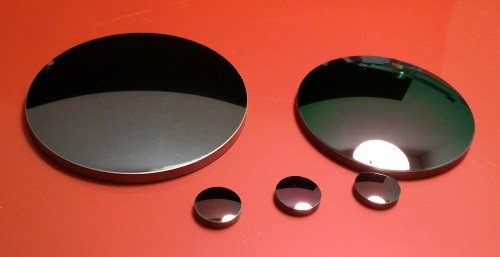Infrared Thermal ImagingKnowledge

Infrared principle
1. Infrared Definition
In nature, any object with a temperature above absolute zero (-273℃) can emit electromagnetic waves. Infrared is the most widespread form of electromagnetic waves in nature, it is a kind of energy, and this energy is invisible to our naked eyes. Any object in the conventional environment will produce its own molecules and atoms irregular movement, and constantly radiate thermal infrared energy.
2. Infrared band range
The light waves emitted by the sun are also called electromagnetic waves. Visible light is an electromagnetic wave that can be felt by the human eye. After being refracted by a prism, seven colors of red, orange, yellow, green, cyan, blue, and purple can be seen.
Infrared light is part of these electromagnetic waves, which together with visible light, ultraviolet light, X -rays, gamma rays and radio waves make up a complete continuum of the electromagnetic spectrum.
As shown above, electromagnetic radiation with wavelengths ranging from 0.xn--76m-yyc to 1000μm is called infrared radiation.
3. Infrared "atmospheric window"
Infrared radiation electromagnetic waves propagate in the air and are absorbed by the atmosphere, so that the energy of the radiation is attenuated. If the absorbed energy is too much, it cannot be observed by thermal imager.
The absorption of infrared ray by atmosphere and smoke cloud is also related to the wavelength of infrared radiation, The infrared ray is transparent for 3~5 microns and 8~14 microns. Therefore, these two wavelengths are called the "atmospheric window" of the infrared. Using these two windows, the infrared thermal imager can observe in the normal environment without changing the situation of infrared radiation attenuation.
1. Principle of thermal imaging
In popular terms, infrared thermal imaging is the transformation of invisible infrared radiation into visible thermal images.
Different objects or even different parts of the same object have different radiation capabilities and their reflection strengths of infrared rays. By using the radiation difference between the object and the background environment as well as the radiation difference of each part of the scene, the thermal image can show the radiation fluctuation of each part of the scene, so as to show the characteristics of the scene.
The thermal image is actually an image of the temperature distribution on the target surface.
Figure: Thermal images can distinguish the difference in thermal radiation on the surface of the object.
2. Infrared thermal imaging system
A thermal imaging system is a whole system that receives infrared thermal radiation through a series of optical components and photoelectric processing technology, and then converts the thermal image that can be seen by human eyes to be displayed on the screen.
3. Composition of infrared thermal imager
The basic working principle of an infrared thermal imager is: infrared rays pass through a special optical lens and are absorbed by an infrared detector. The thermal image observed by the eye is displayed on the screen. The block diagram is as follows:
Infrared thermal imagers are divided into temperature measurement type and non-temperature measurement type according to their functions.
temperature value of any point on the surface of the object from the thermal image. This system can be used as a non-destructive testing instrument, but the effective distance is relatively short.
Non-temperature measuring infrared thermal imager can only observe the difference of thermal radiation on the surface of the object. This kind of system can be used as an observation tool, and the effective distance is relatively long.
Infrared Detectors:
The infrared detector is a device that converts invisible infrared radiation into measurable signals, and it is the core and key component of infrared whole system.
Detector size:
The size of detector refers to the size of a single detection element on the detector, and the general specifications are 25 μm, 35 μm, etc. The smaller the detection element is, the better the imaging quality is.
Resolution of infrared detectors:
Resolution is an important parameter to measure the quality of thermal imager detector. It shows how many units of detector are in the focal plane of the detector. At present, the mainstream resolutions in the market are 160 × 120, 384 × 288, etc. In addition, there are 320 × 240, 640 × 480 and so on. The higher the resolution, the clearer the imaging effect.
Infrared optical lens:
The infrared optical lens is usually composed of a group of lenses, which can receive various infrared final focal length to the infrared detector, photoelectric conversion processing.
The germanium crystal with a refractive index of 4 is the most used in infrared Oplens optical lenses , which is suitable for the 2-25μm band . Si with refractive index of 3 is commonly used in the band of 1-6μm. The heat-resistant shock of the missile fairing is optimized to use the hot-pressed MgF2 and ZnS.
Previous: Ozone Detector: A Necessary Tool for Air Quality Monitoring
Next: None.
Copyright:@2020-2021
Comments Please sign in or sign up to post.
0
0 of 500 characters used